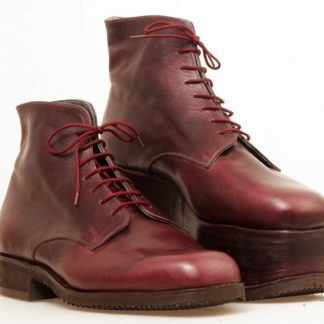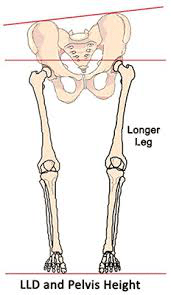
Imagine yourself walking at a normal pace down the sidewalk. Maybe you are on your way to class. The sidewalk has a little bit of a tilt causing your left foot to be higher than the right as it plants on the ground. Imagine how your body may compensate after a few minutes of walking on this path. We have all walked on uneven ground and began to feel the effects with sore knees or hips. But what if you felt this same way all the time even on perfectly flat terrain? This is the reality for those with leg length discrepancies.
Leg Length Discrepancy
A leg length discrepancy (LLD) is any difference in your legs compared to one another. This can be as small as a few millimeters or as large as a few centimeters. Leg length discrepancies can be caused by a number of things including genetics, trauma, or disease. Leg length discrepancies can be categorized in two ways; real and apparent LLD. Real leg length discrepancies are one in which the bony structures are measured to be two different lengths. Apparent leg length discrepancies are caused by other factors such as muscle or joint tightness making the limbs appear two different lengths.
Hopping Along
The actual significance of a LLD on posture and gait depends heavily on the magnitude of the discrepancy. It is highly debated by researchers if a LLD of less than 2-3cm has physical effects on the body and if symptoms a patient is experiencing are due to another cause. R.K. Mahar and R.L. Kirby at Dalhousie University performed a study in which people without a LLD, asking them to stand on blocks simulating a real leg length discrepancy, the researchers saw a misalignment of the hips, an increase in knee flexion and a shift in the center of gravity.
In contrast D.C. Reid conducted a study for those with actual LLD and many did not complain of pain or feeling off balance and chose to not use corrective devices. The body is able to compensate for the difference over time to minimize the displacement of the center of mass of the body. It was also seen in a study done by Gross that athletes are more likely to correct smaller LLD than the average person due to the increased loads experienced during their activity.

For people that are experiencing pain because of the difference there are several ways to reduce the pain. For small discrepancies (less than 1cm) inserts can be placed into the shoe to even out the hips. For differences between 1cm and about 5cm a lift can be placed in the sole of the shoe for the same reason as the inserts. For some special cases or discrepancies larger than 5cm corrective surgery to lengthen or shorten the limb can be performed, but this is often used as a last resort.
Featured image cropped from Balance by flossyflotsam is licensed under CC BY 2.0.

